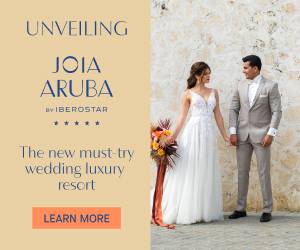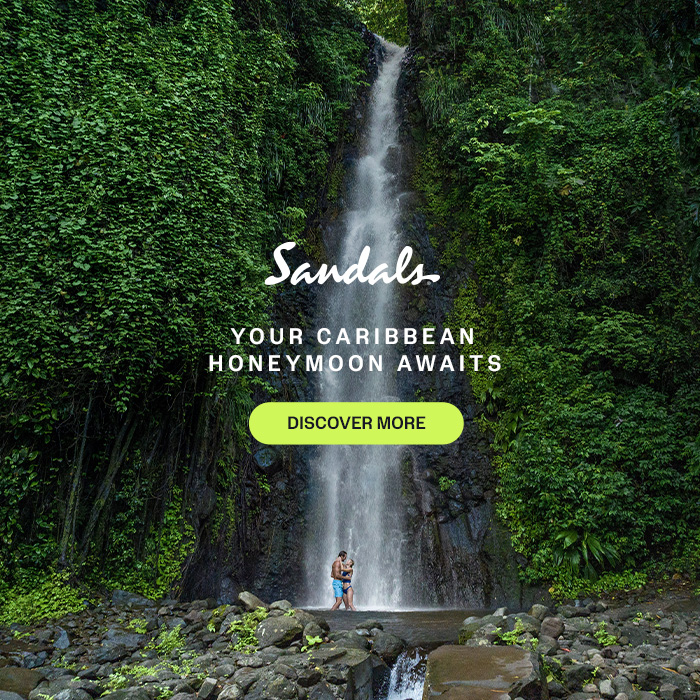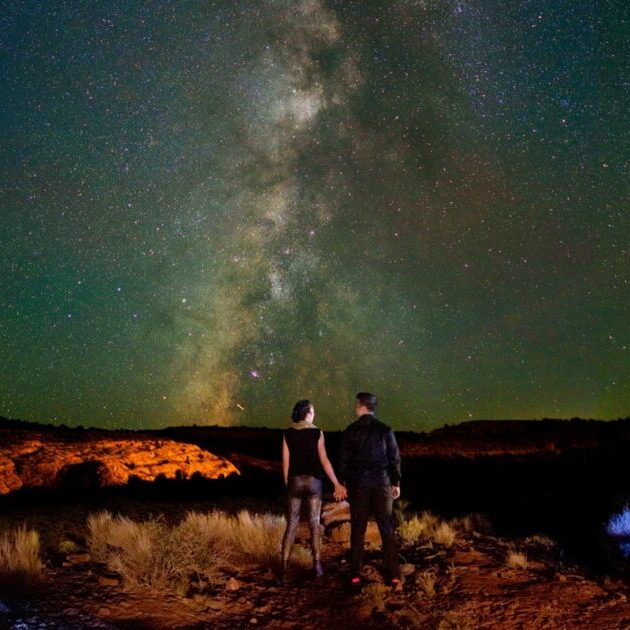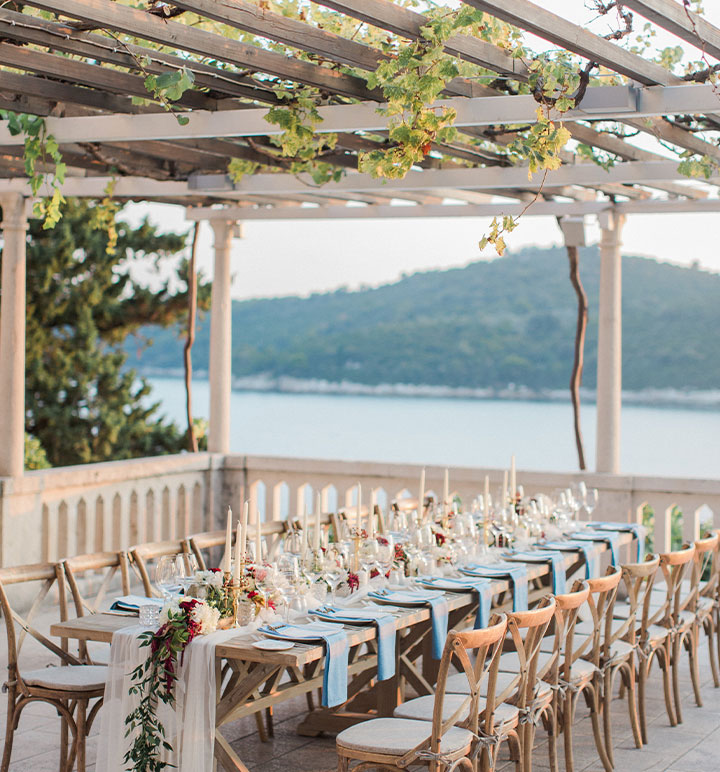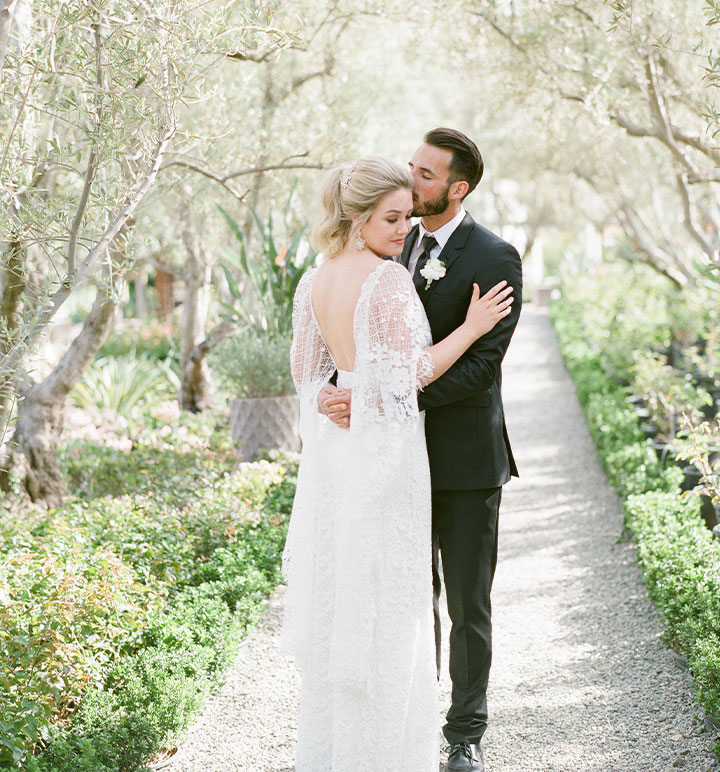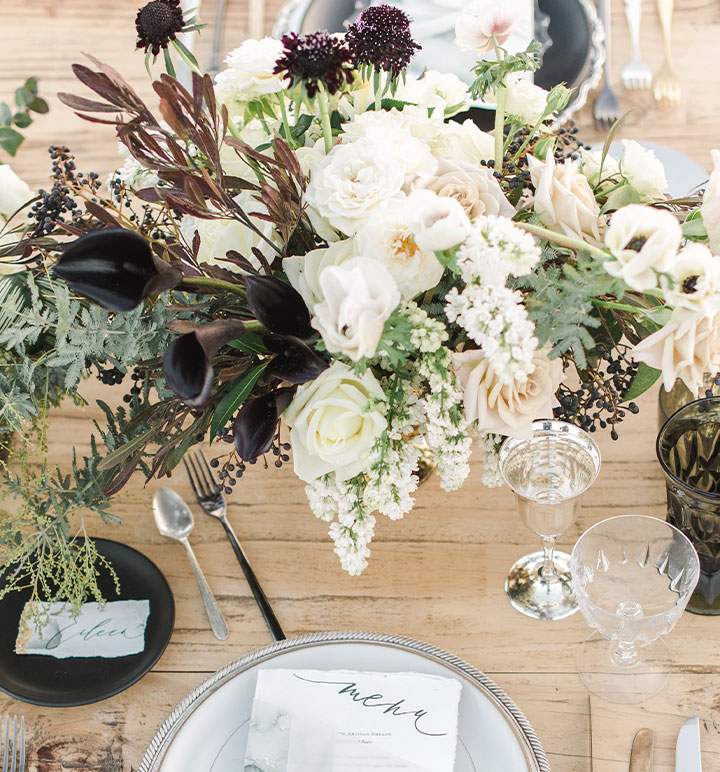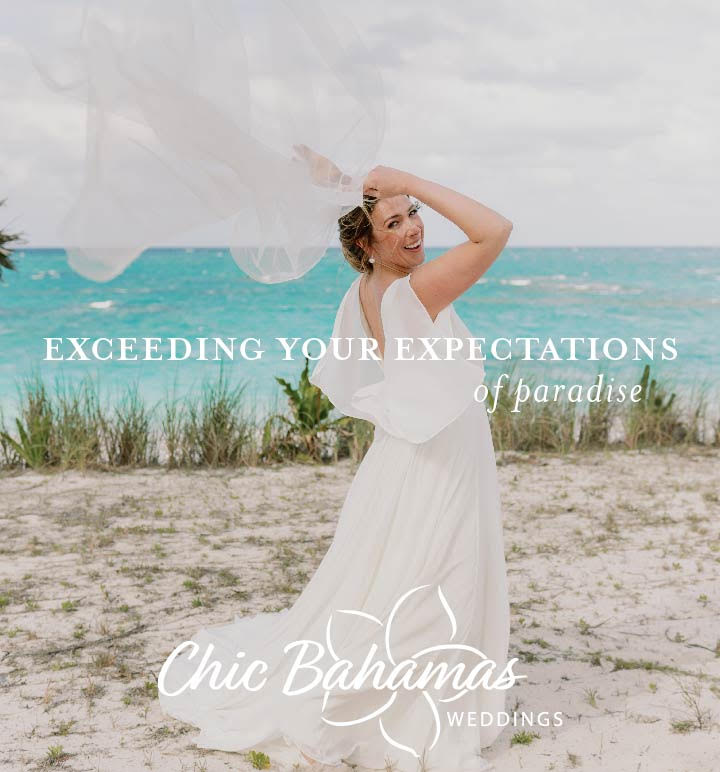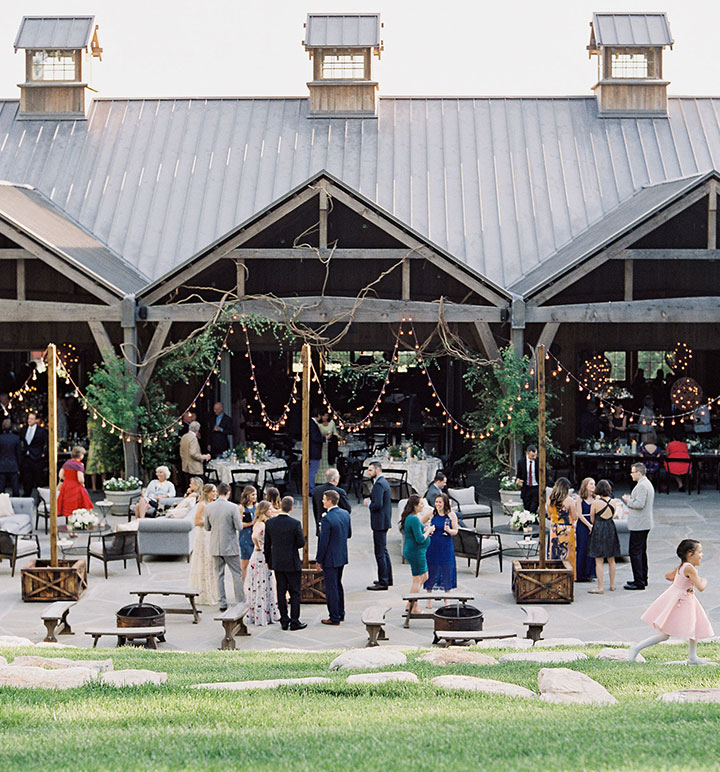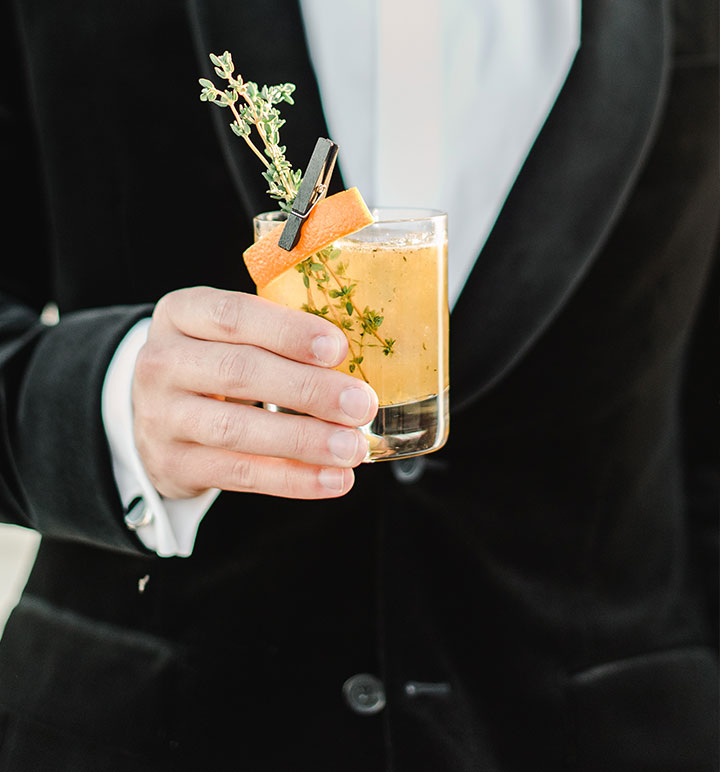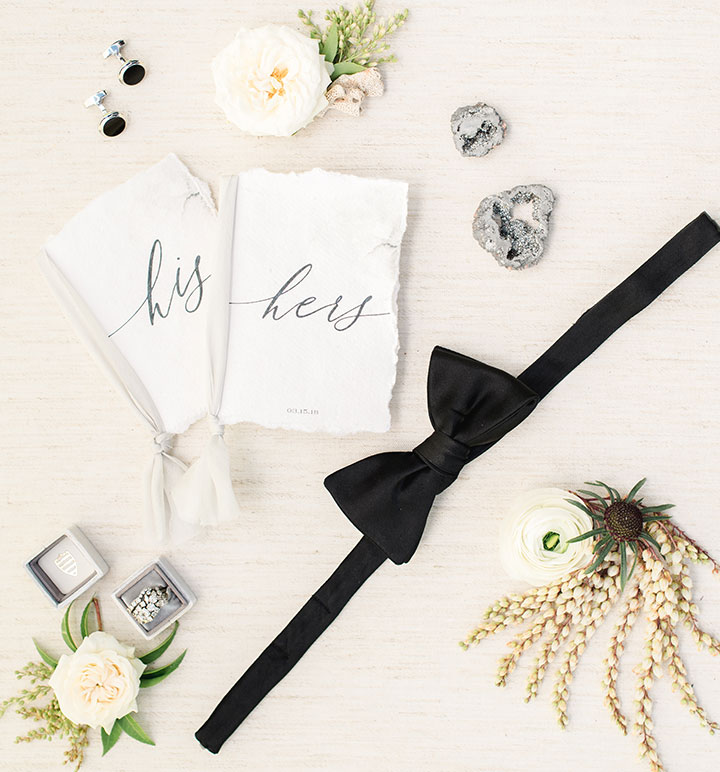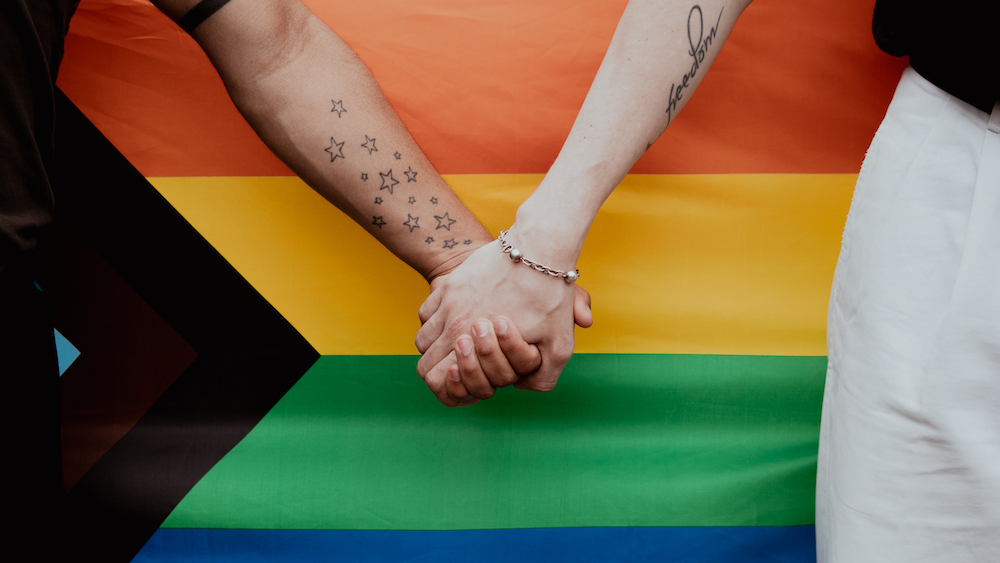
Celebrating LGBT Marriage with Robbins Brothers
CATEGORIES
June 28, 2022
Words by
Photos courtesy of
In our continued celebration of Pride Month, we chatted with Robbins Brothers VP of Merchandising, Sue Hopeman. As a member of the LGBT community herself, Sue talks about how she’s seen the diamond/jewelry industry evolve over time to be more inclusive. Sue also speaks about how she and her wife bypassed Western wedding traditions to better fit their love story! See the full interview below:
A: “I spent my entire career in the retail industry, either leading merchandising, marketing or e-commerce businesses. And very shortly after I started in retail, I was drawn into the jewelry industry. And it was the emotional and meaningful purchase of jewelry that really impacted me. And what I have found over the years is that when somebody buys a significant piece of jewelry, there’s usually a reason for it. They remember that purchase, they’re celebrating an occasion, or it had some type of sentimental value. So, that was super important to me and what drew me into it originally. But about three years ago, I was offered the position of VP of Merchandising for Robbin’s Brothers, and it was an unbelievable opportunity. Robbin’s Brothers has an unparalleled reputation in the engagement ring industry. Everybody knows Robbins Brothers. Everybody knows that’s where you go to buy your engagement rings. And so, I jumped at the opportunity!
On a personal note, back in 2016, I actually married my wife, and at the time, I was not part of Robbin’s Brothers. But sure enough, Robbins Brothers is where we went to buy our wedding rings. I remember the day we shopped for our wedding rings like it was yesterday. It is such an important part of that whole wedding journey that people go through that I thought, ‘Wow, this is a really incredible opportunity to be part of a company that does something meaningful that’s really impactful for people’s lives.’”
Q: As a member of LGBTQ yourself, how have you seen the industry evolve to be more inclusive?
A: “It has evolved. Back in the early 2000s, when I first started in jewelry, the entire industry was catering to man and woman relationships. It was very focused on traditional marriage, everything from the advertising to the communication, to the community involvement. It was all around traditional marriage.
And then, probably around 2003/2004 when civil unions started to take place, that’s when the jewelry industry started to wake up and realize, ‘There’s a whole audience out there that we’re not talking to and that we have not recognized, and we’re certainly not supporting them and their needs.’ Slowly, over time, jewelers started to really change their perception of who their guests are and how to appeal to this more non-traditional, but yet equally important, couple. Everything began to change.
Ultimately, for me personally, I got engaged in 2001. So, a long time ago. I was living in Dallas at the time, and I remember the morning that my wife asked me to marry her. I said, ‘well, yes, but what I’m not sure what I’m agreeing to because we’re not allowed to get married.’ She said, ‘we’re going to be really hopeful that someday, maybe, we will be able to get married.’ And just as an FYI, we’ve been together for 23 years, and we’ve raised four daughters over those 23 years!”
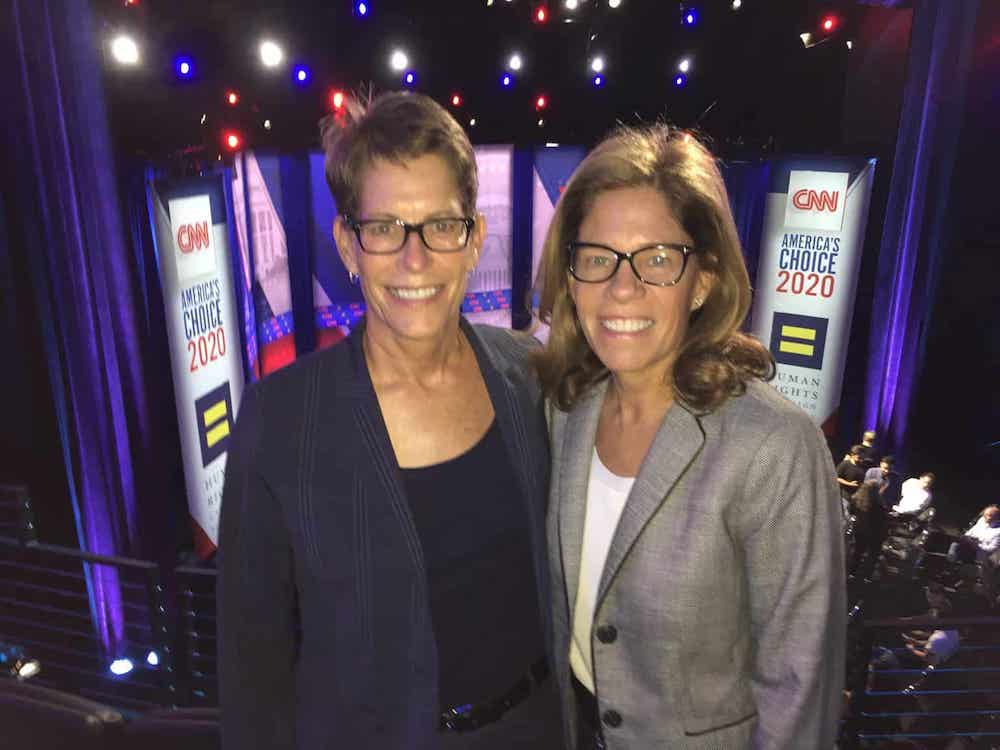 Image sourced from Robbins Brothers’ blog
Image sourced from Robbins Brothers’ blogQ: Many LGBT couples choose to put Western tradition aside and wear their rings on the right hand. Is this something you and your partner do?
A: “We do, yes! So, when my wife first proposed to me, I looked at her and said, ‘So, should we wear these rings on our left hand like everyone else, or should we wear them on our right hand?’ And we had quite a bit of conversation about it. And we have always been intrigued by Western Europe, just the inclusive nature of the Western European countries being much more forward-thinking than the U.S. was at the time. And for those who have traveled through Europe, most people know that couples typically wear their rings on the right hand. And we said, you know, we like that. It makes a statement that we have a relationship and we have our partnership. And in many ways, it’s very much the same as other couples, but yet it says we’re different, and it says something is unique about us. And on the outside, you might look at us and, yeah, we’re two moms and we’re raising daughters and we’re going to soccer games and tennis matches. We’re doing everything else every other couple is doing. But yet, we still were unique in our own way. And so we made the decision, where our rings on our right hand.”
Q: Were there other wedding traditions you skipped to better fit you and your partner?
A: “So, I’m not sure how much of this was because we were an LGBT couple or how much of it was because we were not 20-something when we got married, but we did brake a lot of traditions. So, first off, we had a 16-year engagement. That’s probably a little longer than most couples would have, but we needed to wait until 2015 when the civil court deemed that gay marriage was legal in all 50 states. So, that was probably the first thing we did.
And then, we kicked off our wedding weekend with an upscale bowling event instead of the traditional rehearsal dinner. And I do not bowl, my wife does not bowl, my kids don’t really bowl but we thought, ’what would be a really cool way to have all these out-of-town guests get together and start getting to know each other?’ We found an upscale bowling alley with terrific food so that was our rehearsal dinner.
For the actual wedding, we put on the invitation that this is a celebration to include ‘dinner, dancing, music, play and laughter.’ We were married by a very dear friend of ours he’s an African American gay man that I have known for probably 30 years and we chose him to officiate our wedding. And we actually hosted a cocktail party for an hour before the wedding… It really gave everybody a chance to just chat and get to know each other. And we wanted quality time with our guests.
And then we sent everyone to where the wedding was and did the quick change into our wedding dresses. We had the ceremony and then converted the space into a game room. We have a very extensive family with a bunch of nieces and nephews, and we thought, ‘we’re going to cater this to our family.’ So we had all kinds of arcade games and said, ‘Take your pick! You could dance and have the more traditional experience, or you could have the game, play and laughter experience!’ We had a blast!
The other tradition we changed is–many people write their own vows these days–we too wrote our own vows. We really focused on love, compassion and sharing our lives – versus the more traditional ‘honor and obey’ vows. But those were the things that were meaningful to us.
So, that’s how we made it our own wedding!”
Q: In what ways have you advocated for the LGBT population in your work as a diamond/jewelry merchandiser?
A: “I think as a member of the LGBT community, I really understand the uniqueness of the couples in the community. But it’s not just the LGBT community, every couple who is getting married wants to think that they’re special and unique. One of the things that is a little bit different about Robbins Brothers is about 30% of what we sell are actually custom orders. This means we can make, design and produce just about anything that a couple wants. So if we have a gay or lesbian couple who comes in and they want something unique and special about their rings, we have the ability to manufacture and produce that for them. Robbins Brothers builds such long-lasting relationships with our guests. Point of note in not a week goes by that our guests are not sending us pictures of their proposals. We publish them to the company every month!
I think that’s something special and it has really created an inclusive culture in Robbins Brothers. I’m so happy to be a part of that environment!”

